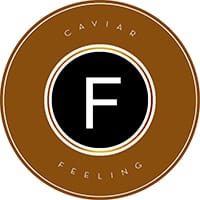Is It Time To Revise Our Definition Of ‘Clean Beauty’?
Nearly one-third of products on the US market are labelled as ‘clean’, while the clean beauty hashtag currently has 5.6 million hits on Instagram and 1.2 billion on TikTok. Also on the rise are related searches for gluten-free, organic, hypoallergenic and vegan beauty products that fit within the clean category.
Consumers not familiar with industrial processes in the beauty industry may be surprised to learn how their favourite cosmetic products are made. The truth about clean beauty is that all ingredients must undergo complex processing to render them suitable for the consumer market. Natural ingredients are distilled down to individual chemical components, synthetic substitutes are made, and additives are peppered in here and there to create the product that sits on the bathroom shelves of men and women all over the world.
At what point in the manufacturing process and supply chain can the label of ‘clean beauty’ be inserted? The purest organic formulations in the world count for nothing if the product isn’t effective, and the most effective ingredients are ones that have been chemically altered to their most potent and stable iteration. Products may be derived from nature, but there is nothing natural about the high-tech scientific methods that bring them into being.
In 2023 we are seeing a continuation of the demand for ‘clean’ products – these sustainable, free-from, ‘natural’ cosmetics made with the latest miracle components featuring exotic fruit and plant derivatives to achieve the skinimalism look that has risen to great popularity of late.
Estimated to be worth an incredible $22 billion by 2024, the global move towards products with ingredients that don’t harm the body or the earth is being led by enthusiastic Gen Z consumers, fuelled by TikTok trends and a desire to consume only ethical and sustainable brands.
The Ascendancy of Clean Beauty
When the term ‘clean’ doesn’t have a regulated definition with specific criteria, it becomes a mere exercise in marketing. Some brands have taken ‘clean’ to mean sustainable or environmentally friendly; others have interpreted it as pertaining to the providence and purity of ingredients. Even more, brands take it to mean free from certain ingredients – parabens, sulphates, phthalates and fragrances, to name just a few.
The former is a preservative which helps products last longer, while sulphates like sodium laureth sulphate (SLS) is a surfactant that cleans by producing a foaming lather that removes oil. Phthalates on the other hand are have been tainted with the idea of being an endocrine disrupters – chemicals which interfere with the body’s hormone system.
Yet the exclusion of particular ingredients don’t necessarily achieve the desired outcome of ensuring products don’t irritate the skin or otherwise harm the body. As it stands, consumers are already protected from harmful products by the strict regulatory standards that apply to cosmetics manufacturing. Meanwhile, suspicion towards man-made ingredients is unfounded when natural ingredients like essential oils can and often do irritate the skin.
In the end a lack of industry definition of what constitutes as ‘clean’ means brands are often left to set their own standards when it comes to formulations, packaging and more. This opens the definition to a side scope not an agreed industry standard.
Where to Next?
Going beyond the unhelpful label of ‘clean’, brands should accept that consumers are expecting ingredient ‘safety’ to be the rule rather than the exception and to use appropriate and safe preservatives that ensure health and safety, not preservative systems that tick a clean box. No one likes a product that grows mould! Whether it’s fair or not, particular ingredients have fallen out of favour, and consumer interest in what they’re putting on their bodies is here to stay. Consumers also expect brands to refrain from animal testing and be environmentally responsible.
The limits of technology and science have created a thriving market of beauty products – impressive results are expected, but they must be green. According to NielsenIQ’s 2030 Clean Beauty report, Gen Z are 1.3 times more likely to try environmentally friendly products. Brands must consider the raw materials used in their products and ensure they meet sustainability and carbon neutrality standards.
Examples of this include the blue beauty trend, where products have little to no water in their formulas due to growing concern over the scarcity of water. Refillable products are another trend that is more meaningful for conscious consumers who aspire to clean beauty.
Clean beauty clearly symbolises a significant tipping point for the beauty industry where consumers are taking on a more active role in deciding what ingredients and products most suit their wellbeing.
When it comes to walking the line between product efficacy and managing consumer suspicion towards man-made ingredients, it’s best to take a transparent approach and educate consumers on the contents of their products. Only then can brands begin to make progress in navigating this broad but lucrative category.
By Rohan Widdison, CEO of New Laboratories.
You’ll also like this:
Why Bone Broth Is the Key to Glowing Skin and Overall Wellness








Leave a Comment